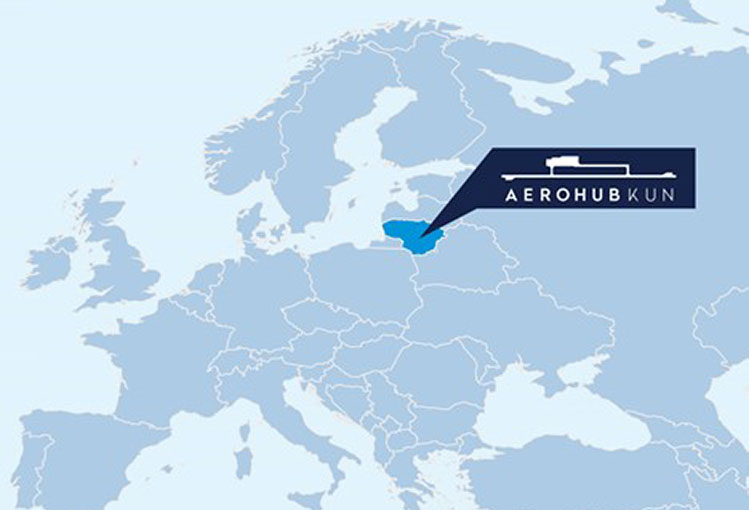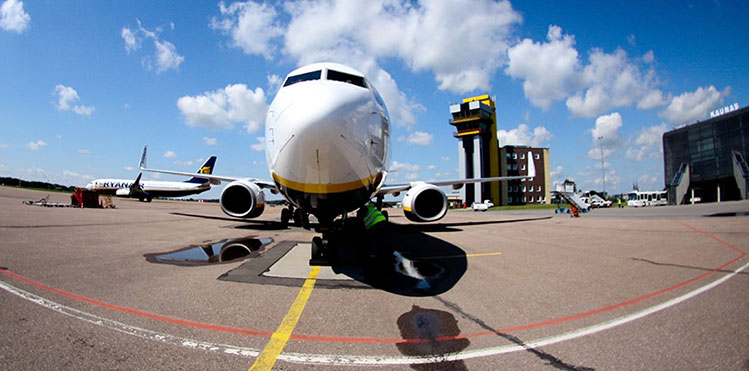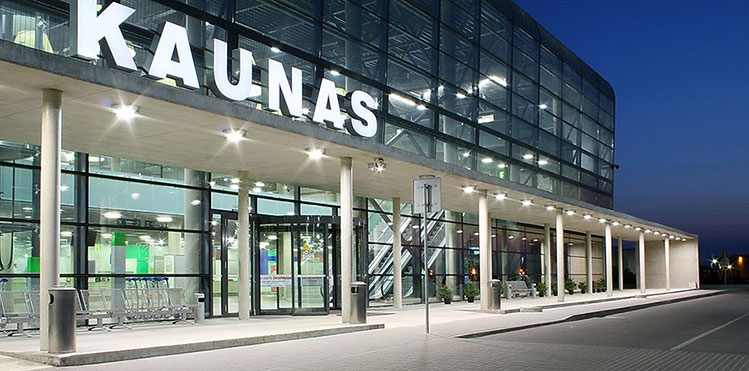Kaunas Airport is changing rapidly, with a progressive future vision. The creation of Lithuanian Airports last year, following the merger into one entity of Vilnius, Palanga, and Kaunas airports, has established a clear strategic direction. This sees Kaunas Airport become the base for aviation-related businesses through implementation of the AEROHUB KUN investment project.

Jūratė Baltrušaitytė, CCO Lithuanian Airports: “We see AEROHUB KUN hosting a cluster of airspace-related services and activities, enjoying the benefits Kaunas can deliver and exploiting the synergies of members to the best common advantage.”
One year on from the merger, the results certainly indicate it has been successful. Figures for the first half of 2015 show that passenger numbers across the three Lithuanian airports grew 10% year-on-year to 1.9 million. “The new organisation has implemented a new management structure and processes, non-aeronautical revenue-driven projects, and strategic development projects like AEROHUB KUN,” Jūratė Baltrušaitytė, CCO Lithuanian Airports, explained.
Indeed, AEROHUB KUN is the key project in the development strategy for Kaunas Airport. It primarily focuses on MRO (maintenance, repair, and overhaul) service providers, OEM (original equipment manufacturer) and other spare part manufacturers and traders, as well as aircraft manufacturers and training service providers. “We see AEROHUB KUN hosting a cluster of airspace-related services and activities, enjoying the benefits Kaunas can deliver and exploiting the synergies of members to the best common advantage,” Baltrušaitytė said.

Lithuanian Airports is seeking to capitalise on Kaunas’ strategically-favourable geographic location by attracting a cluster of aviation-related companies to AEROHUB KUN, with phase one already complete.
€7.2 million has been invested in the first phase, and these initial works have created a new taxiway and apron, paving the way for the start of operations by the first investors. Lithuanian Airports is in discussions with several potential investors – mainly MRO service providers – and expects the first agreement to be signed by the end of 2015. “The project is being presented and promoted internationally, and we are pursuing every lead on the list,” Baltrušaitytė asserted. “In addition to a strategically-favourable geographic location, we can ensure excellent infrastructure. KUN has a 3,250m runway, and there are no curfews, no noise, slot or other restrictions. Meanwhile, Lithuanian investment promotion agency Invest Lithuania consults with, and provides full support to, foreign investors which start operations in Lithuania. One of our key competitive advantages is our multi-lingual staff, with engineering expertise, whose average salary is competitive compared with Western European countries.”
Low-cost connectivity

Kaunas Airport is looking to grow its passenger traffic, predominantly through new low-cost carrier services. In July, Ryanair introduced a route to Copenhagen, which immediately achieved excellent performance. Its top performing routes from Kaunas include London Stansted, Dublin and Oslo, with load factors exceeding 85%.
While a cluster of aviation-related businesses is being sought at Kaunas, the airport is also looking to grow its passenger traffic, predominantly through new low-cost carrier services. Ryanair is currently completely dominant at Kaunas, with 18 destinations this summer season. It relocated an aircraft to Kaunas in July, introducing a route to Copenhagen in the process, which immediately achieved excellent performance. Ryanair’s top performing routes from Kaunas include London Stansted, Dublin and Oslo, with load factors exceeding 85%.
“The connectivity from KUN is important not only to the closest catchment area, but for travellers of neighbouring countries as well,” Baltrušaitytė commented. “Due to excellent road infrastructure to Kaunas, customers from Northern Poland, Belarus, South Latvia, and Kaliningrad, all travel from KUN. We see passenger traffic as one of the important activities for KUN.”

With €7.2 million invested in the first phase, AEROHUB KUN is ready for the start of operations by the first investors. Lithuanian Airports is in discussions with several potential investors, and is indeed already looking ahead to the second phase of the development.
Lithuania is becoming an increasingly attractive destination for both tourist and business traffic, as figures for the first half of 2015 attest. Following the 10% growth achieved in the first six months, Lithuanian Airports expects its three airports to handle over 3.8 million passengers this year. These passenger numbers are indicative of a strengthening national economy and the increased mobility of people, with the airports playing an important role in Lithuanian economic growth. Lithuanian Airports is capitalising on this with a clearly-defined vision, a key element of which is implementation of the AEROHUB KUN investment project that positions Kaunas Airport as the base for aviation-related businesses. With €7.2 million invested in the first phase, AEROHUB KUN is ready for the start of operations by the first investors. Lithuanian Airports is in discussions with several potential investors, and is indeed already looking ahead to the second phase of the development, during which it plans to connect Kaunas Airport with Kaunas Free Economic Zone.







